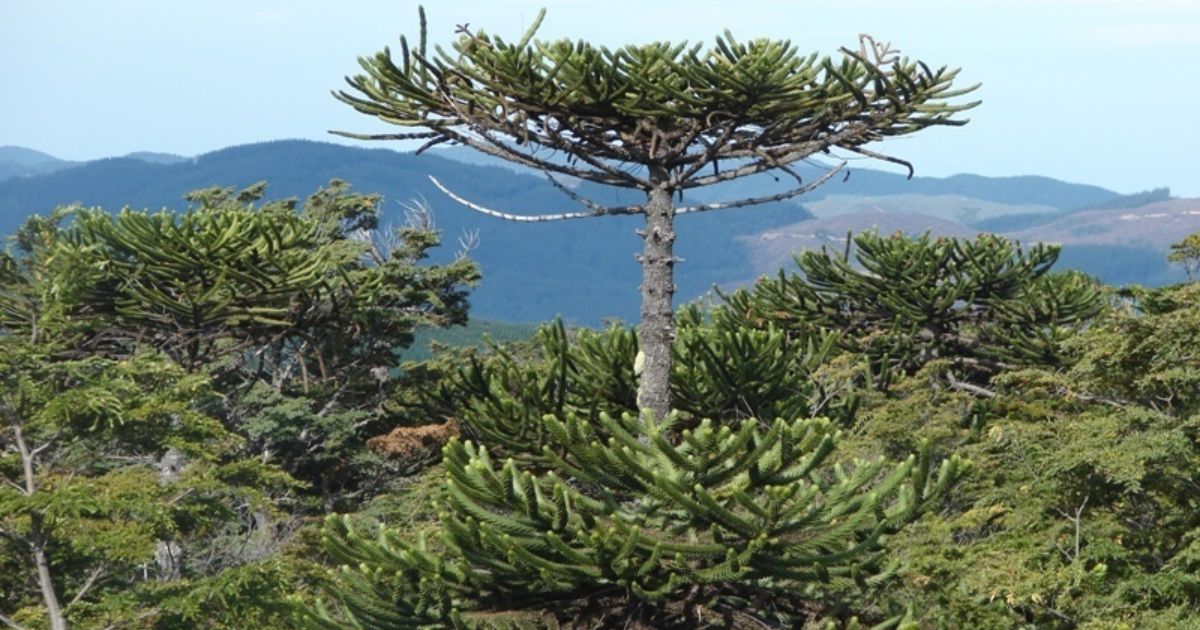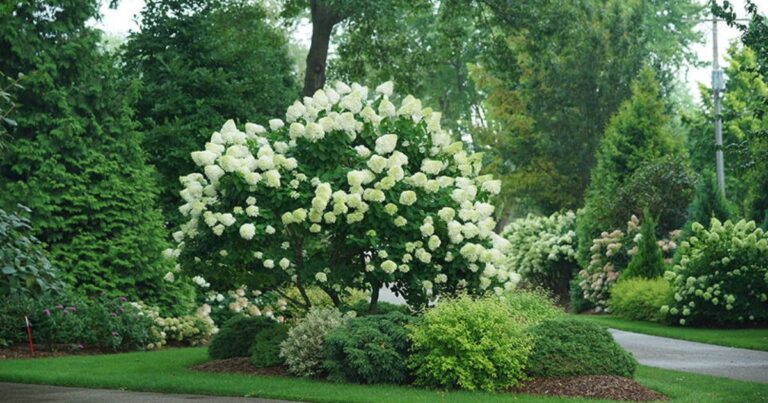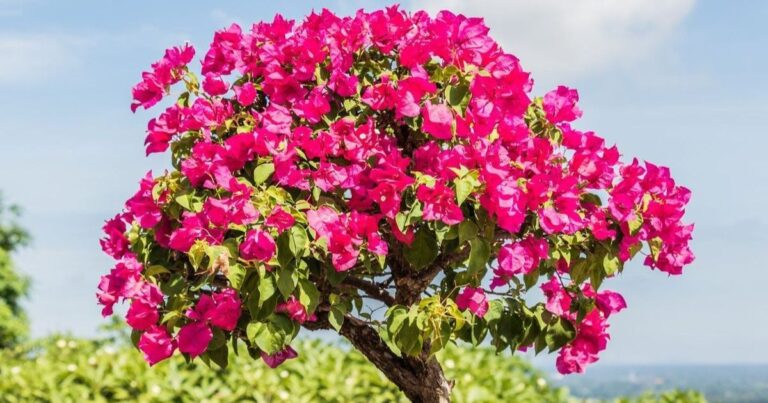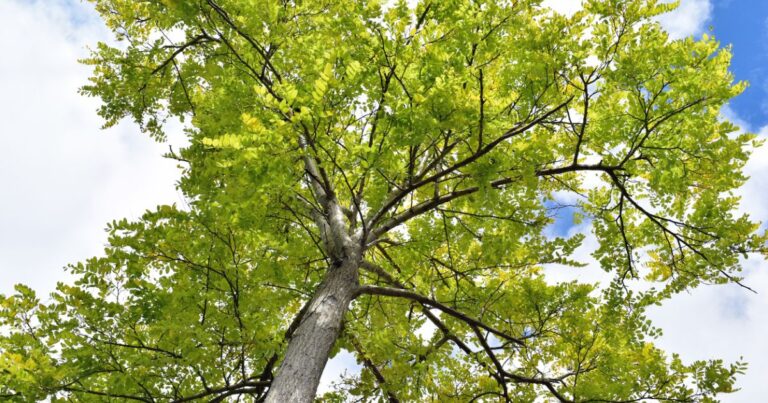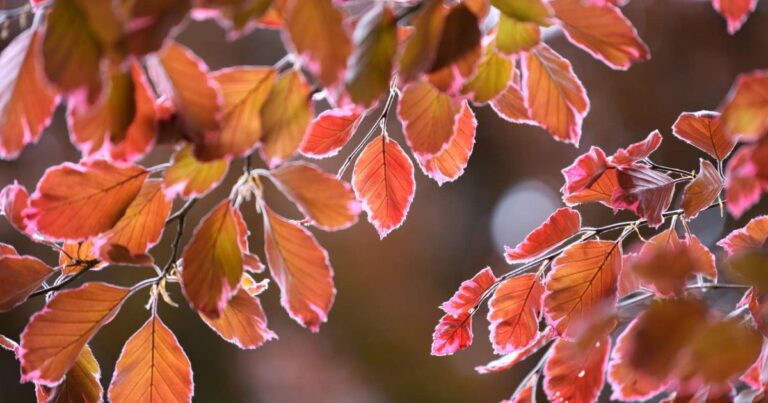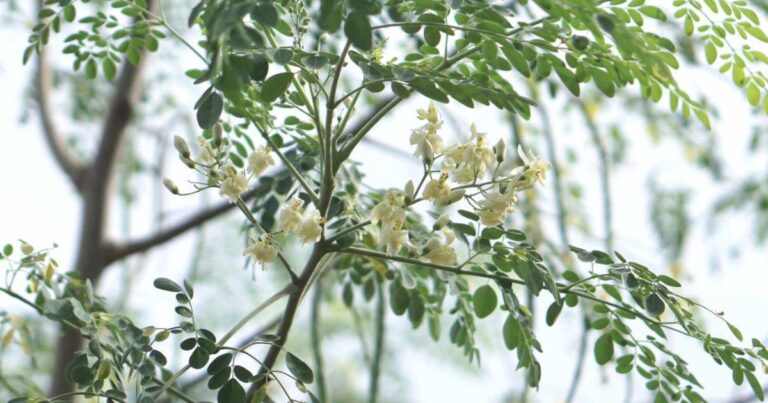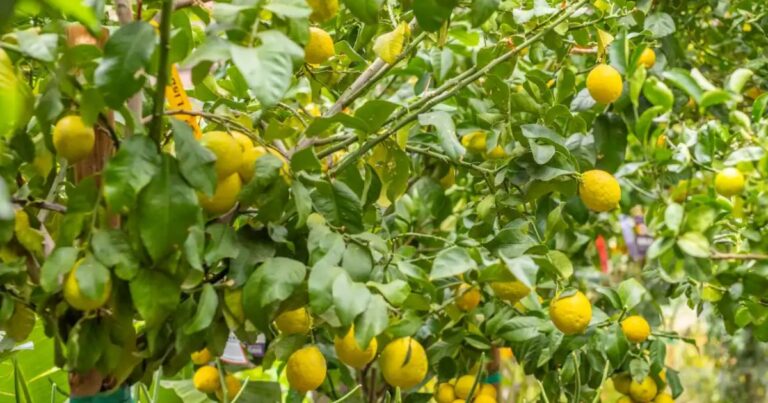Monkey Puzzle Tree Care – Planting, Growing And Uses
A towering marvel with spiky, angular branches and evergreen needles that seem to defy the laws of nature. The Monkey Puzzle Tree, or Araucaria araucana, is not just any plant; it’s a living piece of history originating from the ancient forests of Chile and Argentina. With its striking appearance and unique growth habits, this conifer has captured the hearts and imaginations of gardeners and nature enthusiasts alike.
Despite its eye-catching allure, proper Monkey Puzzle Tree care can be quite intricate. From selecting the right planting site to employing best practices for maintenance and use in landscaping, our guide will help you navigate the fascinating world of Monkey Puzzle Trees.
What Is A Monkey Puzzle Tree?
The Monkey Puzzle tree, scientifically known as Araucaria araucana, is a fascinating conifer native to the cool-temperate forests of Chile and Argentina. Renowned for its unique, spiky appearance resembling an oversized, prehistoric creature, this tree defies conventional notions of beauty in landscaping.
With branches that twist and turn like arms reaching out to embrace the sky, the Monkey Puzzle isn’t just a visual curiosity. This tree has been part of human history for centuries. Indigenous peoples revered it for both its striking form and nutritional value—its seeds are edible and can be roasted or ground into flour.
The allure of the Monkey Puzzle extends beyond aesthetics; it’s also a testament to evolution itself. As one of the oldest living species on Earth, with some specimens estimated to be over 1,000 years old, it symbolizes survival against climatic changes long lost on many other species.
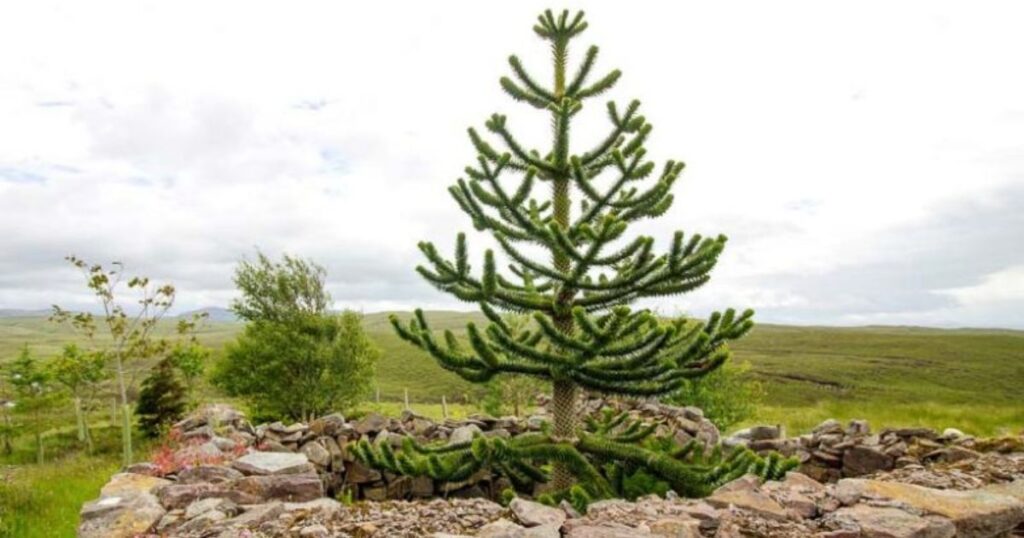
Monkey Puzzle Tree Types
- Small Monkey Puzzle Tree
- Monkey Puzzle Tree Florida
- Monkey Puzzle Tree Bonsai
Small Monkey Puzzle Tree
The Small Monkey Puzzle Tree, or ‘Araucaria araucana’, is a fascinating botanical gem that challenges preconceived notions of traditional landscaping. Native to the mountainous regions of Chile and Argentina, this hardy conifer boasts a unique aesthetic with its spiky foliage resembling prehistoric flora—a striking reminder of Earth’s ancient past.
Growing to just a fraction of its towering relatives, the smaller varieties offer the allure of their larger counterparts without overwhelming garden spaces, making them an ideal centerpiece in contemporary urban settings.
Monkey Puzzle Tree Florida
The Monkey Puzzle Tree, an astonishing conifer native to Chile, offers a unique twist to Florida‘s lush landscape. With its trademark spiky branches and whorled arrangement of stiff, evergreen leaves, this tree not only stands out visually but also serves as a symbol of resilience in diverse climates.
In Florida’s often humid and subtropical environment, the Monkey Puzzle demonstrates exceptional adaptability, thriving where many other trees might falter. Its striking silhouette against the skyline is complemented by its intriguing history; named for its seemingly insurmountable challenge for monkeys trying to climb it, this tree evokes curiosity about nature’s complexities.
Cultivating a Monkey Puzzle Tree in your garden can make you a trendsetter among neighbours who often rely on more predictable species. As it reaches heights of up to 100 feet with age, this botanical conversation starter becomes a centrepiece for any outdoor space while attracting an array of wildlife—including birds that find refuge among its protective foliage.
Monkey Puzzle Tree Bonsai
It’s a conversation starter that captivates bonsai enthusiasts. As a bonsai specimen, the Araucaria araucana showcases not only resilience but also an incredible visual aesthetic.
Its dark green, whorled leaf patterns juxtaposed against the gnarled, textured bark create a miniature landscape of intriguing contrasts. Caring for this tree as a bonsai requires not only knowledge of its growth habits but also an appreciation for its slow development—a true testament to patience in both gardening and art.
Monkey Puzzle Tree Care
This remarkable evergreen, native to the Chilean Andes, thrives in well-drained soil with good aeration, mimicking the rocky terrains of its origins. When planting your tree, consider spacing it to accommodate its majestic size and symmetrical form.
Dedicating space not only enhances their striking silhouette but also prevents competition with neighboring plants, ensuring optimal growth. Watering requires a balanced approach; while young trees benefit from consistent moisture, overwatering can lead to root rot—a menace that many unwary gardeners face.
Aim for deep watering sessions during dry spells rather than frequent light sprinklings. Apportioning mulch around the base nourishes the soil as it breaks down while regulating temperature fluctuations above ground. Pruning is generally minimal but essential for removing any dead or damaged limbs.
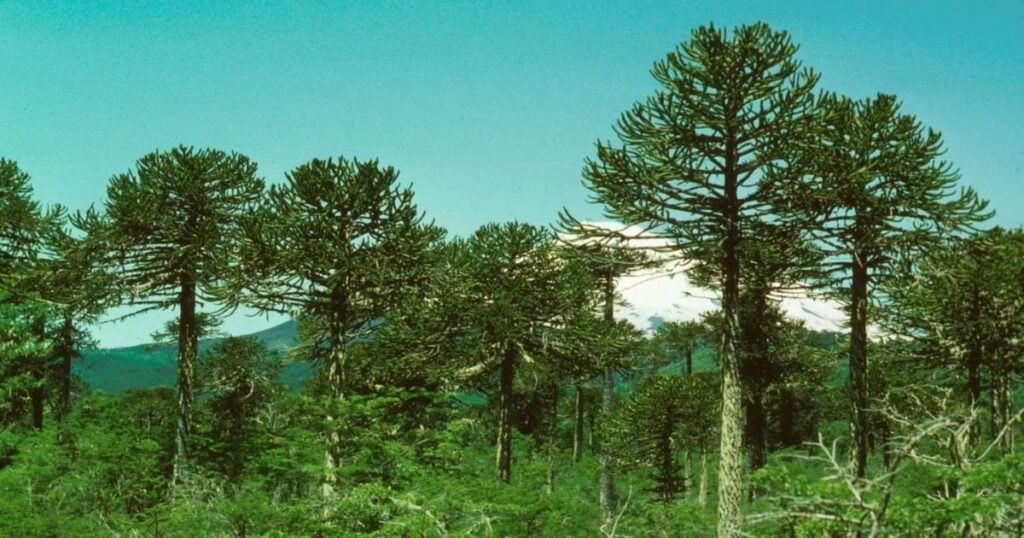
How To Plant A Monkey Puzzle Tree?
Planting a Monkey Puzzle tree, known for its unique, spiky branches and striking silhouette, requires careful consideration of location and soil. These magnificent trees thrive best in well-draining soil with a slightly acidic to neutral pH. To create a thriving environment, amend the planting hole with organic compost or leaf mold to boost nutrient levels and enhance drainage.
When selecting the perfect spot in your garden, opt for a space that receives full sunlight; this not only encourages rapid growth but also showcases their distinctive shape.Consider planting your Monkey Puzzle tree during late spring or early autumn when temperatures are mild. Dig a hole twice as wide as the root ball but no deeper than its height – this ensures stability while preventing water logging around the roots.
After placing the tree into the hole, backfill gently with soil and provide firm support, such as stakes if necessary. Water generously after planting to help it adjust to its new surroundings; ongoing care should include mulching around the base to retain moisture while suppressing weeds.
Monkey Puzzle Tree Seeds
Monkey Puzzle Tree seeds are not just a botanical curiosity; they embody a rich tapestry of history and ecological importance. Originating from the temperate rainforests of Chile and Argentina, these seeds offer an intriguing glimpse into the prehistoric landscapes that once flourished on Earth.
Cultivating Monkey Puzzle Tree seeds can be both a rewarding and enlightening experience for gardeners, as these trees often serve as living links to ancient ecosystems.
Monkey Puzzle Tree Wood
The Monkey Puzzle tree, or Araucaria araucana, is not just a striking presence in gardens and parks; its wood boasts unique qualities that set it apart from conventional timber.
Known for its interlocking grain pattern and remarkable durability, Monkey Puzzle wood has been increasingly sought after by artisans and designers looking for sustainable alternatives to more traditional hardwoods. Unlike many other species, this wood is surprisingly resistant to decay and insect damage, making it an excellent choice for both furniture-making and construction.
Monkey Puzzle Tree Zone
The Monkey Puzzle Tree Zone captivates not just with its distinctive arboreal feature but also through its complex ecological tapestry. Ancestral to the lush landscapes of Chile and Argentina, these trees, scientifically known as Araucaria araucana, can live for over a thousand years, making them living relics of the Earth’s ancient past.
In this zone, towering canopies create microhabitats that foster a rich diversity of flora and fauna. From unique mosses draping limbs like delicate shawls to vibrant lichens that paint tree trunks in colors unseen elsewhere, every inch buzzes with life.
The spiky leaves of the Monkey Puzzle enhance not only the aesthetic charm but also serve as nature’s armor, protecting nests and fostering intricate predator-prey relationships among birds and small mammals rare to find elsewhere.
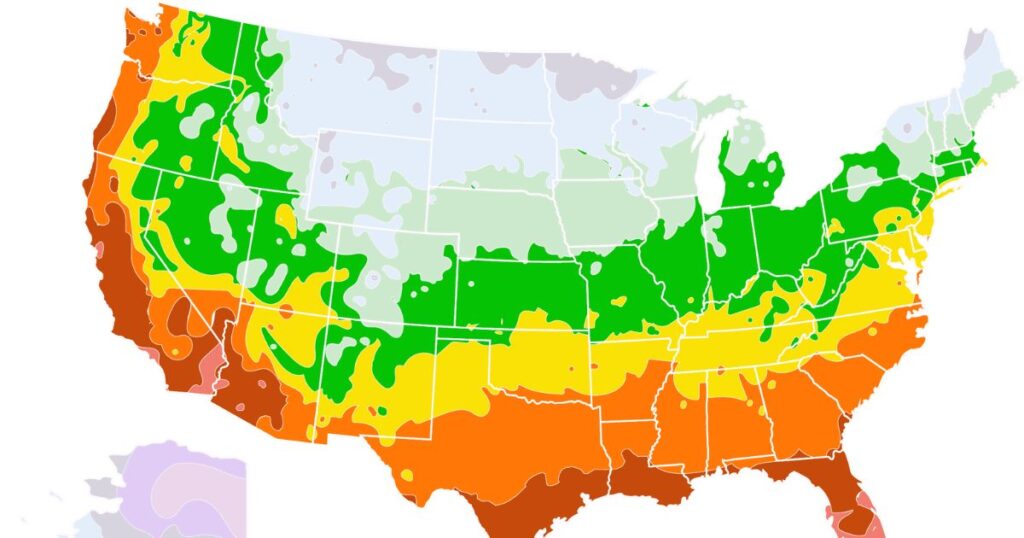
Monkey Puzzle Tree Growth Rate
Typically growing about 12 to 24 inches per year under ideal conditions, it emphasises quality over speed—mature trees can reach heights of up to 100 feet if nurtured properly. This slow but steady growth allows the tree’s root system ample time to establish itself deeply in the soil, contributing to its resilience against environmental stresses like drought or poor soil quality.
Climate plays a pivotal role in shaping the trajectory of the Monkey Puzzle Tree’s development. In regions with cooler temperatures and well-draining soils—similar to their native Chilean highlands—their growth flourishes unexpectedly well compared to milder climates.
What Are Monkey Puzzle Tree Benefits And Uses?
- Aesthetic Appeal: With its spiky foliage resembling prehistoric times, it creates a striking focal point in gardens.
- Drought Tolerance: Once established, this tree is incredibly drought resistant, making it ideal for low-water landscapes.
- Wildlife Habitat: The dense branches provide shelter for various birds and small animals, encouraging biodiversity in your garden.
- Culinary Uses: Its seeds are edible and can be roasted or ground into flour, adding unique flavors to dishes.
- Medicinal Properties: Traditional uses of the Monkey Puzzle tree include treatments for respiratory issues and inflammation thanks to its natural compounds.
- Timber Quality: The wood is durable and can be used in construction or carpentry projects due to its resistance to decay.
- Soil Improvement: As a nitrogen-fixing plant, it contributes to soil fertility by enriching the ground where it’s planted.
- Low Maintenance: This tree thrives with minimal care once established, making it a great option for busy gardeners.
- Historical Significance: Often referred to as ‘Chilean Pine,’ this tree has fascinating cultural ties that connect communities across regions.
- Carbon Sequestration: By planting Monkey Puzzle trees, you’re helping combat climate change as they effectively absorb carbon dioxide.
How Much Is A Monkey Puzzle Tree Worth?
The value of a monkey puzzle tree, scientifically known as Araucaria araucana, can range significantly based on several factors including age, size, and rarity. While younger trees might fetch anywhere from $50 to $150 in garden centres, mature specimens that reach impressive heights and have well-established root systems can command prices upwards of $1,000 or more.
Monkey Puzzle Tree Vs Moringa Tree
This unique appearance attracts horticulturists and garden enthusiasts alike, seeking not only its beauty but also its resilience against harsh weather conditions.
The Moringa Tree (Moringa oleifera) is celebrated for its incredible nutritional value and fast growth rate. Often dubbed the “miracle tree,” it boasts leaves rich in vitamins A, C, and calcium—making it an essential resource in many developing regions for combating malnutrition.
Conclusion
The Monkey Puzzle tree is a unique and striking addition to any landscape, with its fascinating growth patterns and distinctive appearance. Proper Monkey Puzzle tree care, including well-draining soil, adequate sunlight, and regular watering, is essential for ensuring its health and longevity. By understanding its specific needs and potential uses in your garden or as an ornamental feature, you can truly appreciate the beauty this tree brings to your space.

